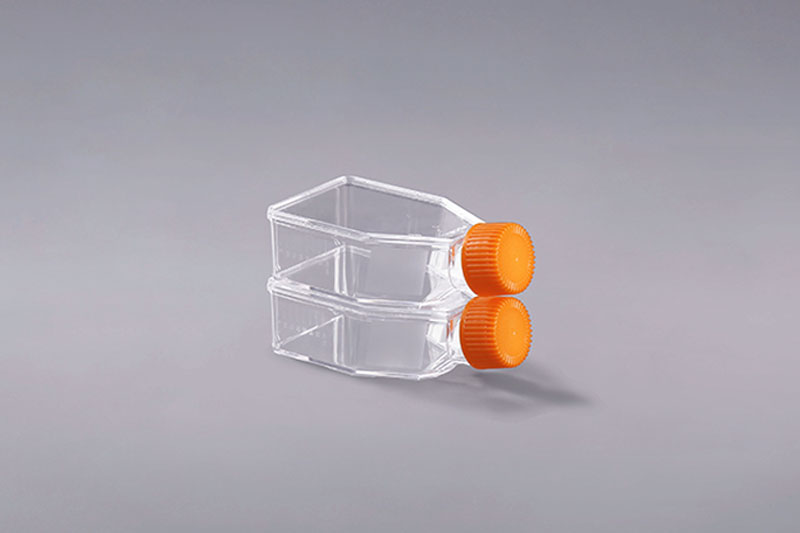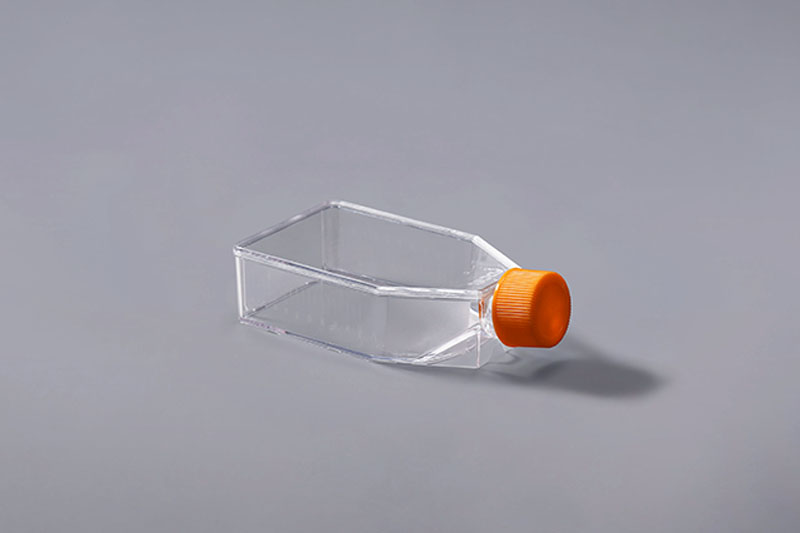Insect cells are a class of eukaryotic cells mainly extracted from insects. By cultivating the host virus, it can cause insect epidemics, but it is harmless to humans, animals and plants, so it can be used as a virus insecticide and can also produce some medicinal proteins. Cell culture flask is a kind of cell culture consumable commonly used for culturing insect cells, so what problems should be paid attention to when culturing insect cells?
1. Temperature and environment: Insect cells should generally be cultured in a non-humidified environment at 27°C. Carbon dioxide exchange is not recommended, so try to choose a closed lid for the cell culture flask.
2. Culture medium: Different cells have different requirements for culture medium. According to the cell growth characteristics, a special medium for insect cells should be selected.
3. Adherent insect cells: When the cell density is less than 20% of the confluent state, cell growth will be inhibited. Healthy cells are harvested in log phase, so log phase should be selected for passaging. However, if you are culturing strongly adherent insect cells, passaging should be done when the cells have reached confluence or are just beginning to detach from the bottom of the flask, as cells tend to detach at this time.
4. Adherent insect cells adhere very firmly to the matrix under serum-free culture conditions, and it takes a lot of effort to make them fall off. To detach the cells, give the cell culture flask a quick shake with a clapping motion. To avoid contamination, the lid must be tightly closed before doing this.
5. Suspension culture: Some insect cell lines may require a certain process to adapt to suspension culture. There is no need to change the medium during cell suspension culture, and it is necessary to aspirate the cell suspension during regular passage, and then add an appropriate amount of medium to dilute the cells to an appropriate density. Cell nutrients can be fully replenished by adding fresh medium.
The above are five aspects that need to be paid attention to when using cell culture flasks to cultivate insect cells. In addition, be careful not to shake the cell culture flask vigorously to avoid damage to the cells.
The FAI climbed 5.9 percent year-on-year in the first 11 months of 2018, quickening from the 5.7-percent growth in Jan-Oct, the National Bureau of Statistics (NBS) said Friday in an online statement.
The key indicator of investment, dubbed a major growth driver, hit the bottom in August and has since started to rebound steadily.
In the face of emerging economic challenges home and abroad, China has stepped up efforts to stabilize investment, in particular rolling out measures to motivate private investors and channel funds into infrastructure.
Friday's data showed private investment, accounting for more than 60 percent of the total FAI, expanded by a brisk 8.7 percent.
NBS spokesperson Mao Shengyong said funds into weak economic links registered rapid increases as investment in environmental protection and agriculture jumped 42 percent and 12.5 percent respectively, much faster than the average.
In breakdown, investment in high-tech and equipment manufacturing remained vigorous with 16.1-percent and 11.6-percent increases respectively in the first 11 months. Infrastructure investment gained 3.7 percent, staying flat. Investment in property development rose 9.7 percent, also unchanged.
 English
English




















































